AI at Work
AI Design: Quality Benchmarks and Best Practices

Akshita Sharma · Content Marketing Associate
June 12th, 2025 · 14 min read
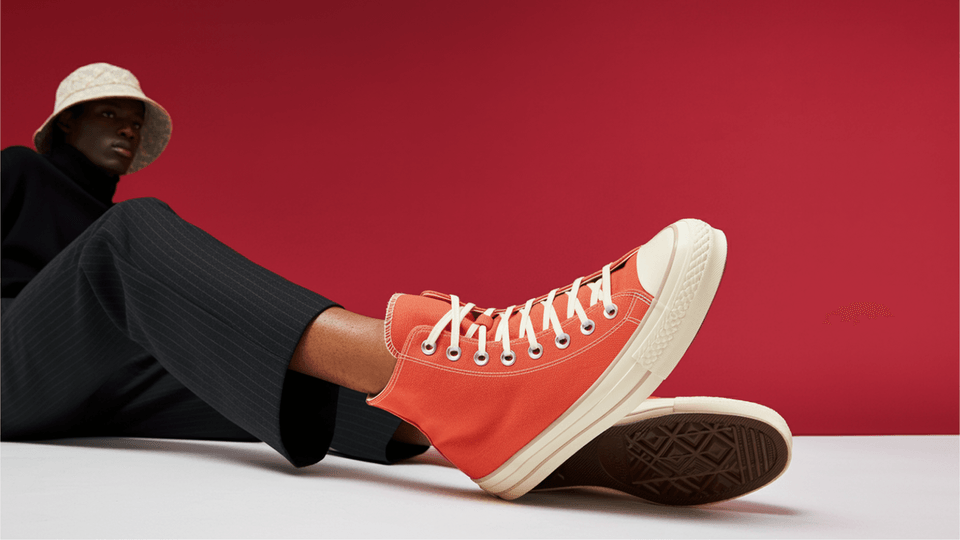
In the AI design process, we explore multiple creative directions — testing concepts, experimenting with variations, and developing prototypes with minimal effort. AI dramatically accelerates the journey from concept to completion. But before placing that final stamp of approval, it's important to ensure that these AI-accelerated designs meet rigorous quality benchmarks.
Quality isn't accidental. It's deliberate. It's measurable. And most importantly, it's achievable when you know what benchmarks matter.
This blog decodes the critical quality benchmarks to provide a practical framework to evaluate and enhance your AI-generated designs.
How can AI be used for design?
Why is quality control essential with AI design tools?
Quality benchmarks for AI designs
Best practices for using AI design tools
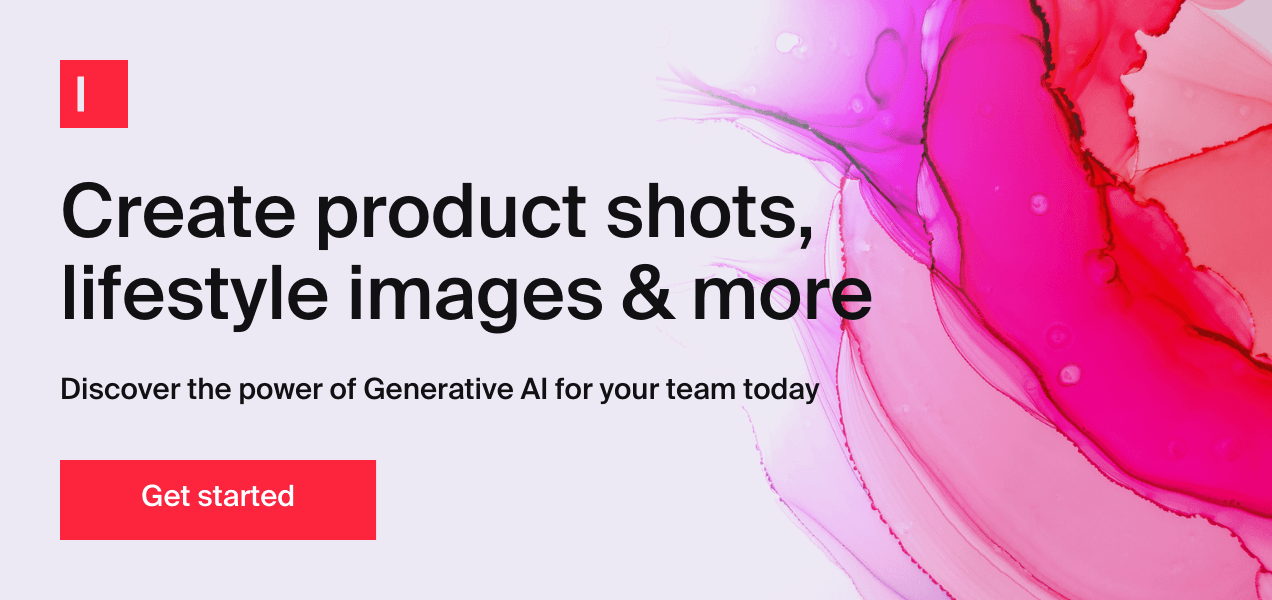
How can AI be used for design?
Creative teams can use AI as a collaborative partner to amplify their creative vision while eliminating time-consuming technical barriers in design workflows.
Advanced AI design tools empower them to:
Generate brand-consistent visuals without investing hours in prompting, editing, and iteration
Automate complex layouts optimizations across platforms by intelligently adapting AI designs and creatives for different channels and screen sizes
Create photorealistic product visualizations without expensive photography sessions
Test design concepts across seasons and markets to validate ideas before committing resources
How AI design tools are transforming the design process
AI design tools are redefining what creative teams can achieve within shorter timelines and budget constraints, even as they face mounting workloads due to the number of digital channels and platforms demanding unique content.
Typeface eliminates the friction that traditionally bottlenecks design production. Recognizing that marketers often struggle with prompt engineering, we've flipped the paradigm. Instead of forcing you to adapt to AI, we've built a Visual Inspiration Studio that fits naturally into your existing workflow.
The studio provides an intuitive visual-first workflow where you can generate brand-compliant images and designs without having to come up with elaborate AI image prompts. You can choose from a library of professional-grade inspiration images designed with different settings and backgrounds – or you can upload your own reference images to kickstart your creative process.
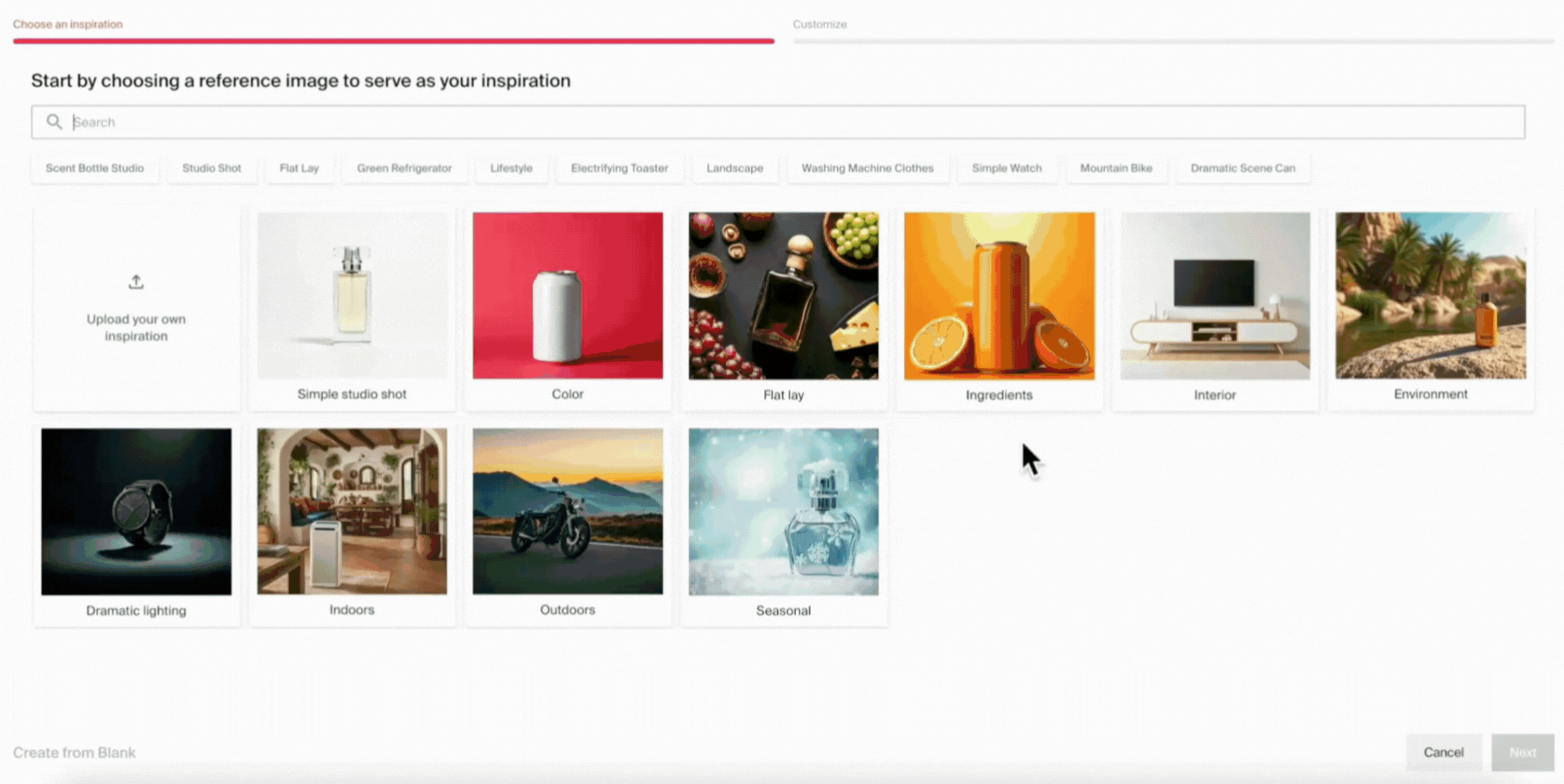
After choosing a creative direction, our content transformation engine converts these inspirations into brand-personalized images and designs.
With our image quality framework, you can make sure that AI-generated design not only meets quality standards but also aligns with your brand guidelines. A core strength of Typeface’s Brand Hub is its ability to train AI models on your brand assets, including your image style, tone, visual guidelines, personas, and product information.
There’s also Typeface’s Ad Agent that allows you to scale brand creatives and designs across multiple channels. It ensures that the fundamental integrity of the original design — its visual hierarchy, the brand elements, and its intended communicative impact — is preserved in all the adaptations.
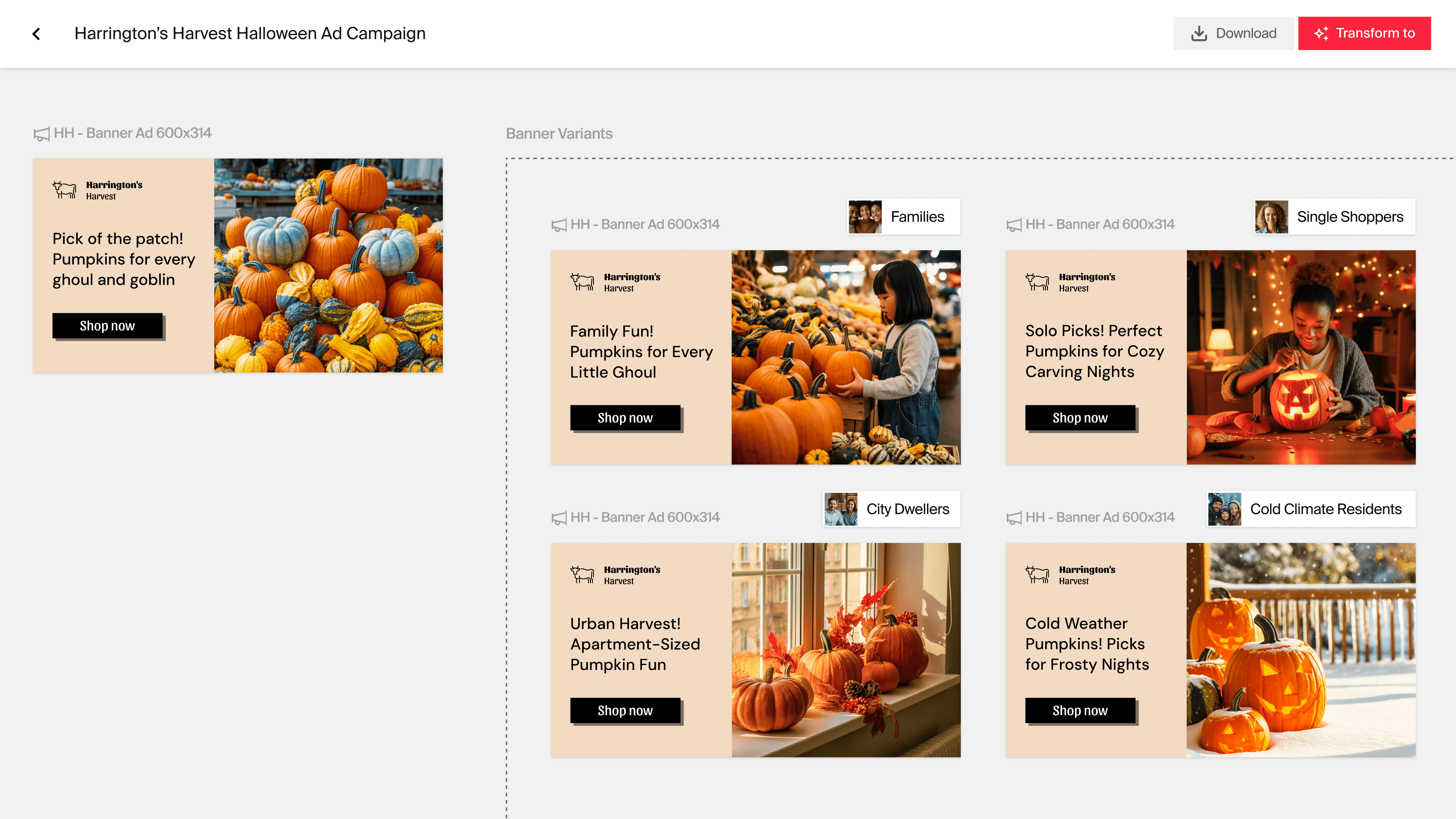
Other features that provide advanced control over your AI designs include:
Image Styles: The AI system learns from your existing visual assets, extracting specific elements like your color palette, composition preferences, and lighting characteristics to generate new visuals that maintain consistent stylistic elements
Product preservation: Ensures that essential attributes of a product are maintained with high fidelity in AI designs
AI Image harmonization: Uses advanced compositing techniques to effortlessly blend products into various scenes.
Multi-model innovation: Our AI system analyzes your project requirements and automatically selects the best AI model for the job
Magic Prompt: Automatically enhances basic AI image prompts with technical modifiers to improve lighting, composition, and details
Rather than spending days or months iterating through concepts, creative teams can now use AI design tools to generate campaign-ready visuals a lot faster.
Case in point: A Fortune 500 consumer goods company that used Typeface to generate product images for their e-commerce ecosystem, slashing production timelines from over 3 months to just hours.
The impact goes beyond just speed. When our in-house designer Ananya was tasked with upleveling AI designs for blogs, she found that exploring keywords like 'dynamic,' 'energy wave,' and 'floating fabric' along with using Magic Prompt, uncovered design possibilities she hadn’t initially considered.
With the Magic Prompt feature on Typeface simple initial prompts were automatically enhanced with technical modifiers, resulting in designs with dramatically improved composition and details.
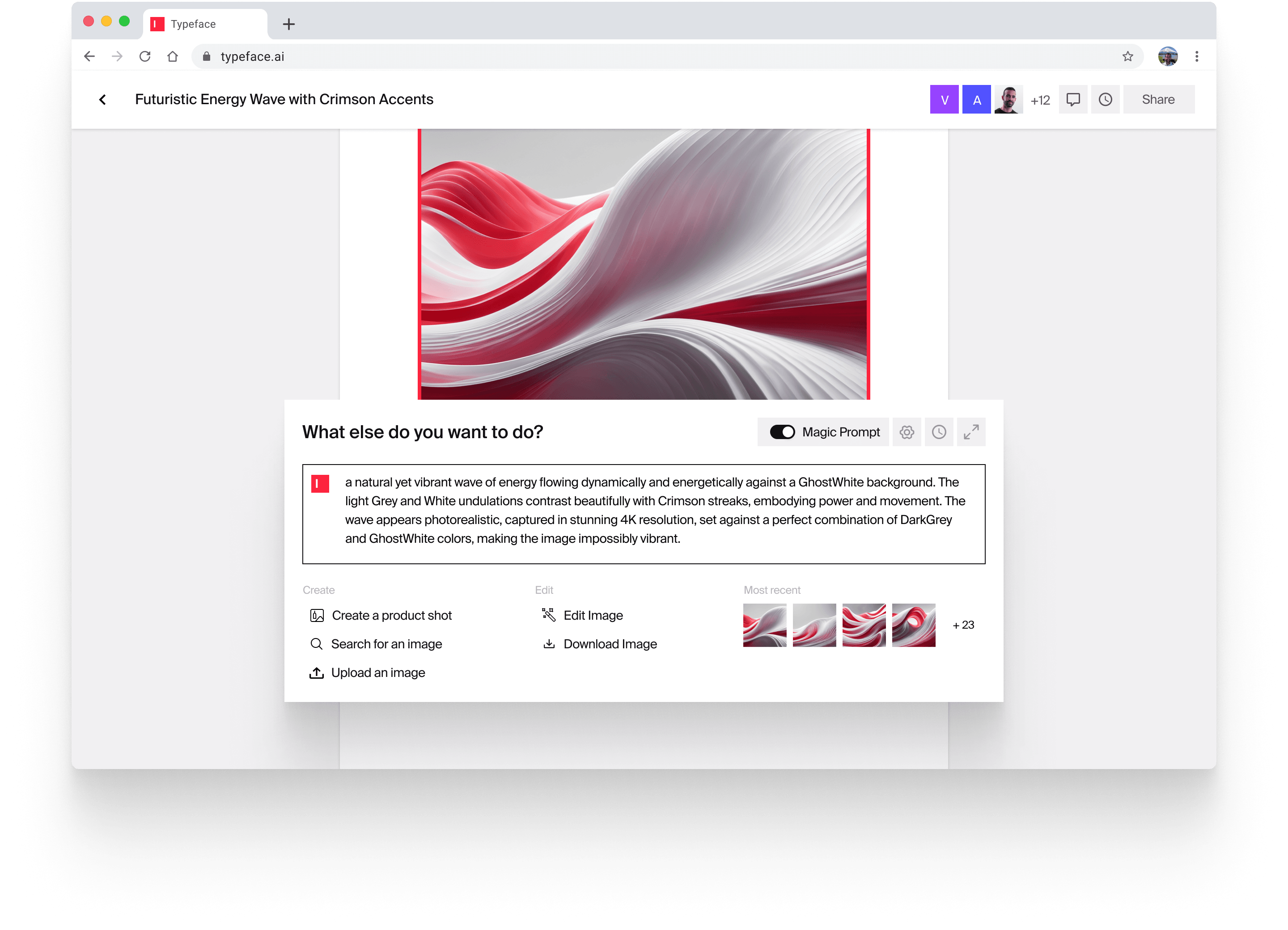
This demonstrates how AI doesn't just accelerate existing workflows—it can unlock entirely new creative directions.
Our AI design platform also delivers enterprise-grade security features and brand governance tools. Typeface ensures you maintain complete intellectual property ownership across your entire creative process, from prompts and reference materials to every asset generated within the system. This creates a fully secure environment where your AI designs remain exclusively yours, addressing the ownership concerns that have made many marketing leaders hesitant about adopting AI design tools.
Why is quality control essential with AI design tools?
As AI adoption accelerates — with almost 36% of organizations already implementing AI for visual content creation and design — the need for robust quality control becomes important.
Design requires subjective interpretation and creative judgment that extends beyond rule-based systems. While AI excels at generating technically sound designs based on established patterns, human designers bring a unique emotional intelligence cultivated through experience and expertise.
With quality control assessments, you can establish clear evaluation criteria and validation checkpoints throughout the design workflow to assess AI outputs against brand standards, campaign goals, customizability, creative benchmarks, and responsible AI use. This helps make sure that technical functionality is balanced with emotional resonance and brand alignment.
Quality benchmarks for AI designs
Here are some critical quality benchmarks to include in your AI design evaluation framework:
1. Brand alignment
These quality benchmarks measure how effectively the AI-generated asset embodies your brand's distinctive visual language and storytelling.
Brand and style authenticity: Does each design element, from color palette to typographic choices, reinforce your visual identity or dilute it?
Emotional resonance: Does the content evoke your brand's unique emotional signature? Do the AI designs just look like your brand or feel like your brand, triggering the emotional response that distinguishes you from competitors?
2. Campaign alignment
These quality benchmarks assess alignment of AI designs with specific campaign objectives and strategic messaging frameworks.
Visual alignment with core messaging: Does the AI-generated brand creative accurately convey your campaign's core message, or is there a disconnect?
Audience relevance: Does the AI-generated brand creative reflect deliberate choices that resonate with your target demographics' preferences, values, and visual language?
Creative direction fidelity: Does the AI-generated design maintain the campaign's distinctive art direction while working within established brand visual guidelines?
3. Visual quality
These quality benchmarks evaluate the resolution, clarity, absence of artifacts or distortions, and the overall quality of the AI designs.
Prompt adherence: How accurately does the generated content match your specific inputs?
Stylistic integrity: Does the AI-generated design align with the intended style direction, whether it is photorealistic product visualization, conceptual illustration, or abstract brand expression?
Product preservation (when applicable): When featuring products, does the AI design retain essential brand markers and product attributes?
Compositional balance: Is the AI-generated design free from noise, pixelation, and other distortions? Is the composition visually balanced, and does it have a clear, well-defined subject? Are the object sizes and textures natural, realistic, and in harmony?
Color and lighting: Are the colors natural and harmonized, with tones that complement the subject and setting? Is the exposure and lighting appropriate, enhancing details with realistic shadows and highlights that add dimension without distortion?
4. Responsible AI
These quality benchmarks evaluate adherence to enterprise ethical standards to ensure fairness, accountability, sustainability, and the minimization of potential harm in AI design workflows
Ethical representation: Does each AI-generated design uphold your brand's ethical standards by avoiding harmful, offensive, or misleading content?
Inclusive visual language: Does the AI-generated design reflect diverse perspectives and avoid reinforcing stereotypes or biases?
Legal compliance: Does the AI-generated design maintain compliance with copyright, trademark, and IP regulations specific to your industry?
💡 Tip: Integrate quality benchmarks within a contextualized AI design evaluation framework
While these quality benchmarks provide the main evaluation criteria, they must be implemented within an AI design framework tailored to your specific organizational needs.
Quality assessment itself is subjective and contextual. What constitutes "high quality" can vary across industries, target audiences, and even geographic regions. For effective quality control of AI designs, it’s important to create a contextualized evaluation system that considers multiple dimensions of quality rather than pursuing a one-size-fits-all approach.
Cross-functional review panels comprising experts from design, marketing, and user experience can collaborate to develop AI design evaluation framework tailored to specific markets and audiences. These frameworks can evolve alongside your brand strategy and consumer preferences, ensuring that AI designs remain relevant even as expectations shift.
Best practices for using AI design tools
When leveraging AI design tools for your creative workflow, following certain best practices can significantly enhance quality, efficiency, and creative outcomes. Here are essential best practices to optimize your AI design processes:
1. Define clear policies, standards, and roles for AI design
Before establishing policies for AI design, a crucial first step is to audit the current design process. Take stock of how internal teams currently create content, identify the AI design tools they use (including any unsanctioned or "shadow" AI usage), map existing content lifecycles, and pinpoint any bottlenecks. Understanding this baseline is critical because policies developed without this grounding may fail to address actual quality issues.
Once the current state is understood, comprehensive policies can be developed covering critical areas such as:
Content creation: Defining acceptable use cases for AI in the design process
Publication: Outlining review and approval processes for AI-generated designs
Ethical AI use: Adherence to principles of fairness, bias control, and accountability in AI design
With clear policies you can set the standards or overarching rules for AI design. These standards define the 'what' and 'how' for aspects like image format, resolution, overall quality, branding rules (including logo usage, color palettes, typography), and the desired style.
Modern AI design tools are capable of incorporating these standards directly into the generation process. Typeface, for example, centralizes all your brand elements like fonts, color palettes, logos, and even specific image styles learned through AI training in Brand Kits. This transforms static guideline documents into a dynamic system that guides the AI during content creation.
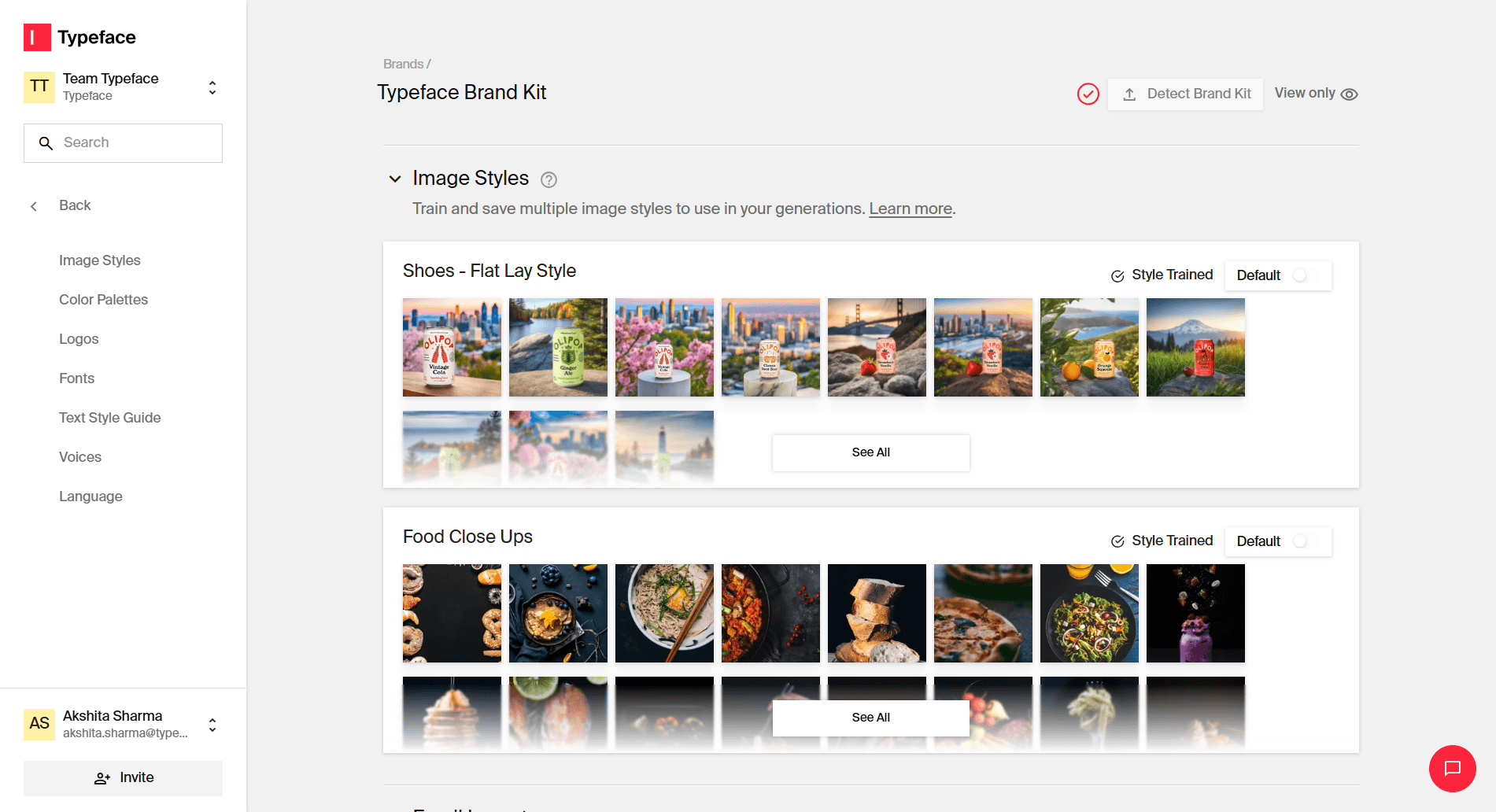
Finally, define clear roles and responsibilities to ensure AI design policies and standards are consistently applied and accountability is maintained. Ambiguity over who performs specific tasks in an AI design workflow can lead to inconsistencies and quality lapses.
2. Use AI to streamline ideation and design
A significant challenge in design is often overcoming the initial "blank canvas." Typeface's Visual Inspiration Studio is specifically designed to address this by streamlining the ideation phase.
It offers several features that accelerate the early stages of design:
Inspiration Gallery: This feature provides access to a vast library containing thousands of pre-set, curated images for different product types, styles (e.g., studio shots, flat lays, lifestyle scenes), and compositions. This immediately provides visual direction, helps explore different creative avenues quickly, and reduces the need for costly and time-consuming initial photoshoots.
On-brand customization: The true power of this AI design platform lies in transforming your creative inspiration into on-brand designs. After selecting an inspiration image (or uploading one), you can easily integrate your own brand assets with a simple click and turn generic visual concepts into tailored, on-brand AI designs.
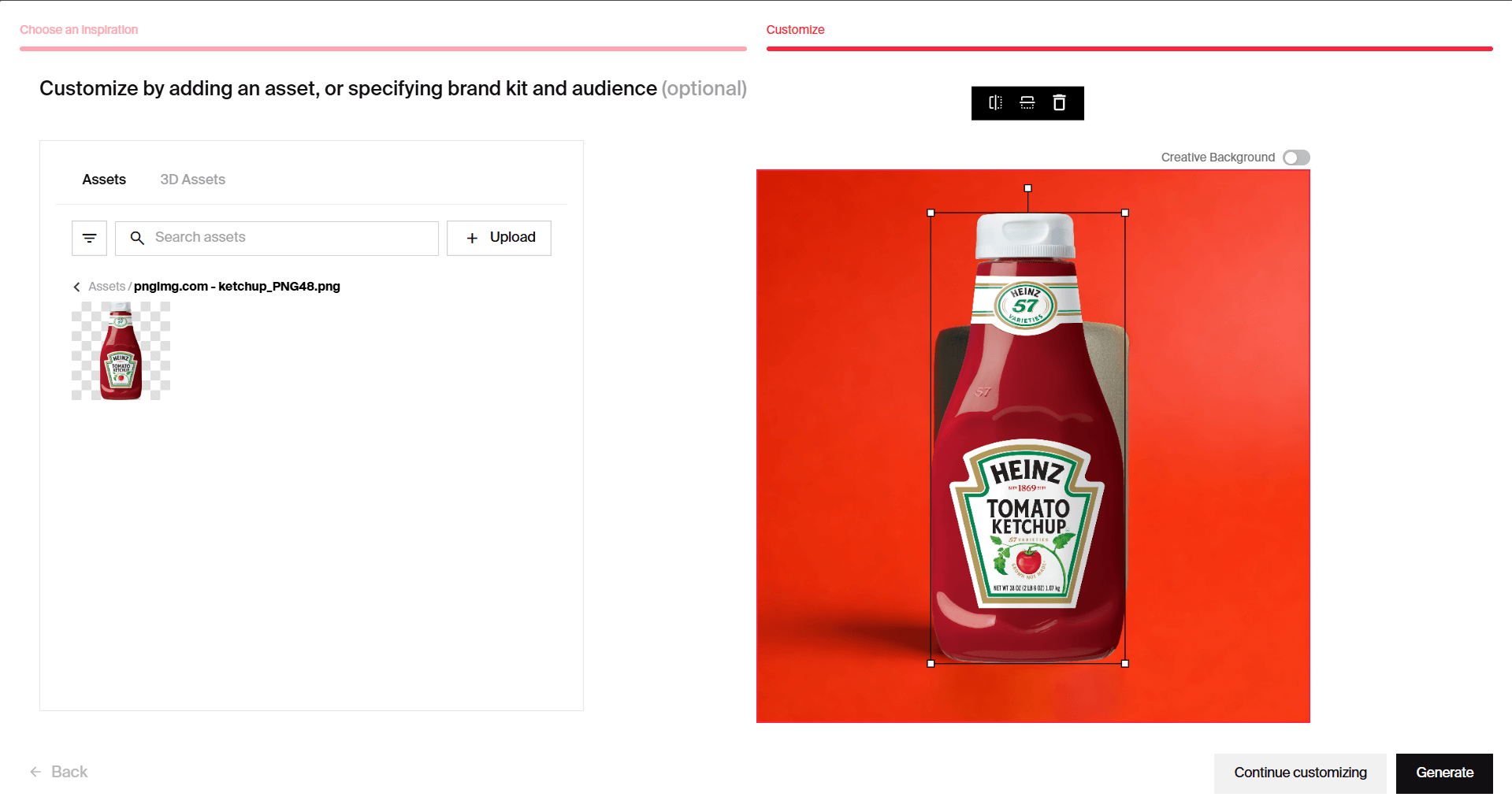
Image Harmonization: To ensure the best quality, the AI automatically blends the added brand asset into the chosen scene, adjusting lighting, shadows, reflections, and other elements to create a cohesive composition.
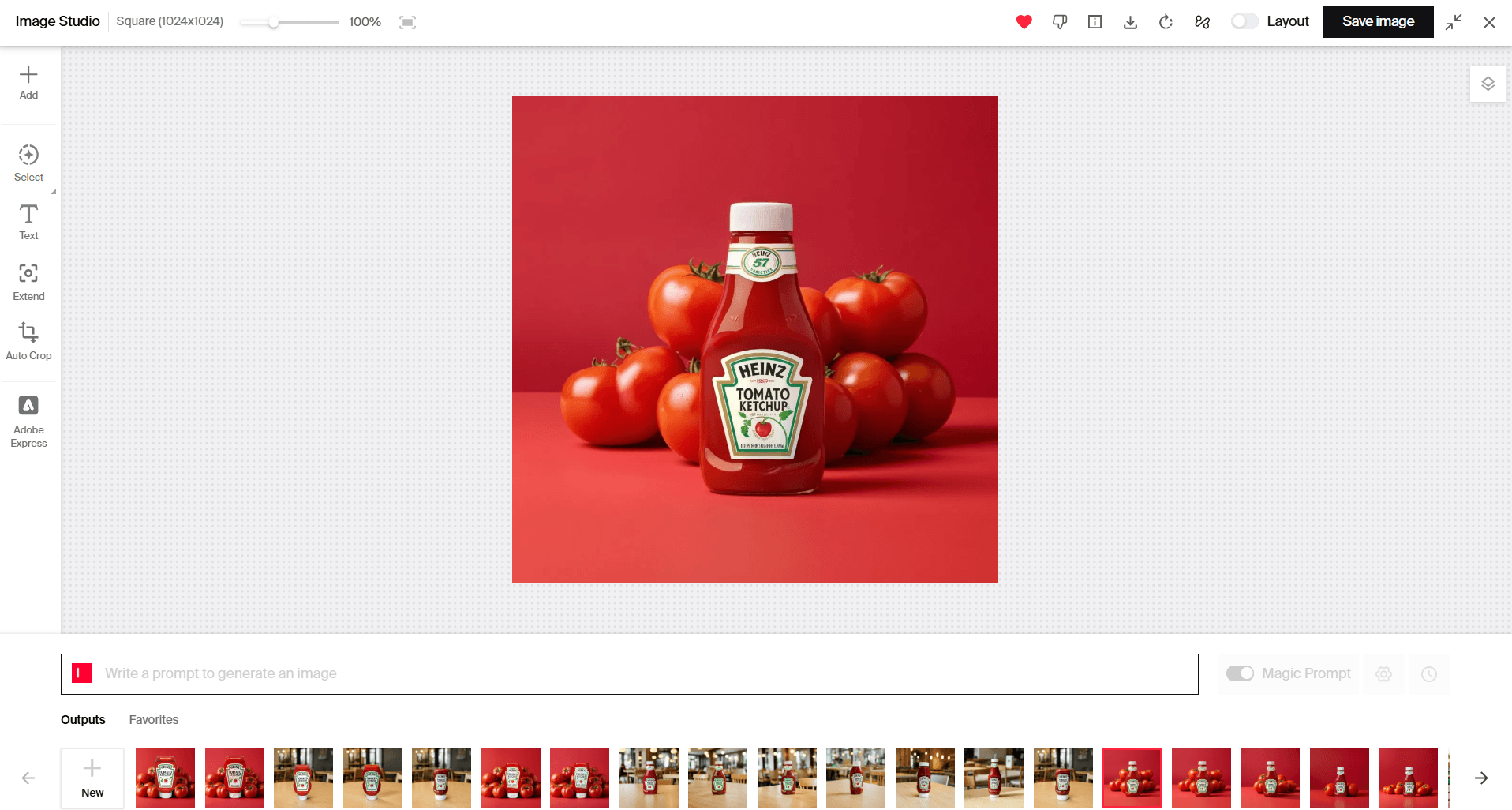
This process of using AI for ideation and design supports quality from the beginning. When you start with curated or approved visual inspiration and apply Brand Kits during customization, the ideation phase is automatically steered towards producing visuals that meet brand standards. This proactive brand alignment minimizes the need for extensive revisions later in the design cycle.
3. Leverage AI's iterative capabilities for refinement
High-quality design is rarely achieved in a single attempt; it emerges through cycles of iteration and refinement. Typeface can become an active partner in this refinement process, offering advanced AI image editing features designed to support an iterative workflow for AI designs:
Magic Prompt: Automatically enhance AI image prompts for better initial results
Select: Brush areas on the image to erase or add (inpaint) with a short description
Text: Overlay text on the image
Extend: Use AI to crop or extend the image to another resolution and aspect ratio
Auto-crop: Specify up to 4 different sizes to crop/extend your image
This approach to refining AI designs can be significantly more intuitive for creative teams compared to relying solely on crafting complex text prompts for editing AI designs. The speed advantage is substantial.
With iterative capabilities offered by AI tools, teams can make precise adjustments based on feedback or self-assessment, so that the final output meets specific quality benchmarks. It's particularly valuable for testing different creative approaches for ad campaigns or exploring seasonal themes.
4. Incorporate human oversight: Reviews and feedback loops
Integrating human oversight through structured review processes and feedback loops is essential for achieving the quality benchmarks outlined earlier. While AI design tools provide remarkable efficiency, humans ensure your designs meet the critical standards of brand alignment, campaign alignment, visual quality, and responsible AI use.
The typical Human-in-the-Loop (HITL) process involves the AI generating an initial output, which is then reviewed by a human expert. This expert validates the output against your established quality benchmarks, identifying any issues the AI might have missed—such as emotional resonance, audience relevance, or ethical representation—and provides feedback for refinement.
Their expertise applies your quality framework at critical checkpoints:
Brand alignment checks: Ensuring AI-generated visuals authentically represent your visual identity and trigger the intended emotional signature
Campaign alignment validation: Verifying that designs maintain core messaging and audience relevance while adhering to the creative direction
Visual quality assessment: Evaluating stylistic integrity, compositional balance, and technical elements like color harmony and focus
Responsible AI use: Confirming designs meet ethical representation standards and inclusive visual language requirements
To do this effectively, these human reviewers need clear evaluation criteria based on your quality benchmarks, along with explicit instructions on the scope of their review.
Take the next step with Typeface
By implementing the quality benchmarks and best practices outlined in this blog, you can create a system where AI and human expertise complement each other, generating brand-consistent, high-quality visuals that drive marketing performance. Fortune 500 companies using Typeface's AI design features are already seeing the results, not just the reduction in production timelines from months to hours, but the ability to maintain brand integrity at scale while dramatically increasing creative output.
Request a demo to see our Visual Inspiration Studio, advanced customization capabilities, and enterprise-grade security features in action. Our team will show you how to implement quality-focused AI design workflows tailored to your specific brand guidelines and marketing objectives.
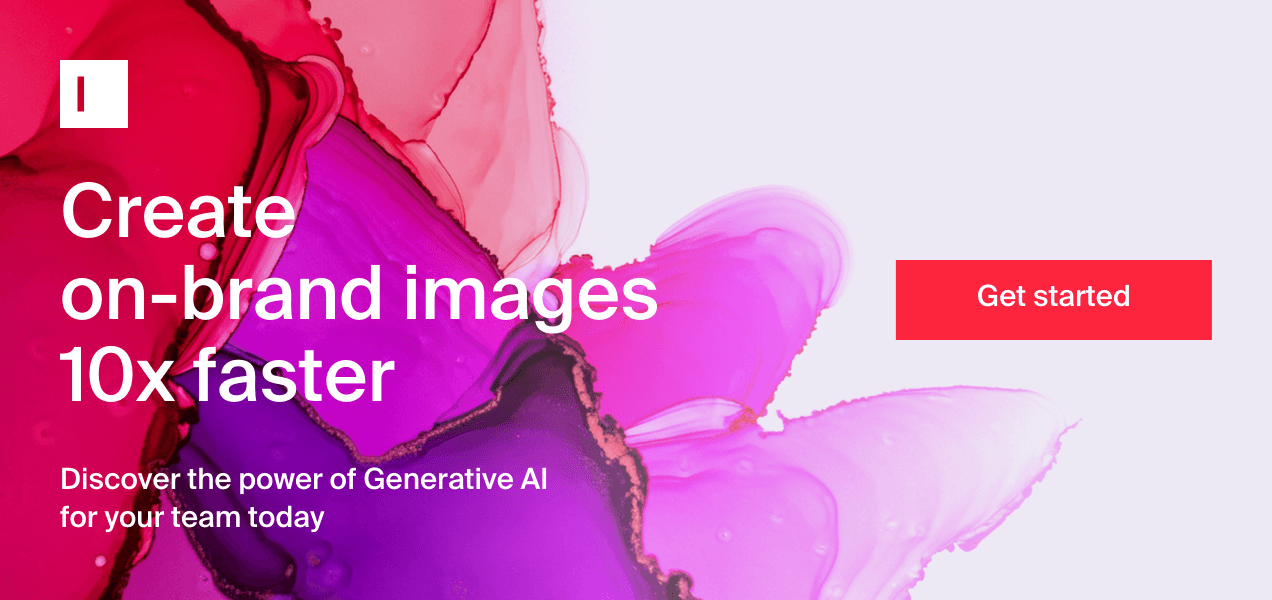
Share
Related articles
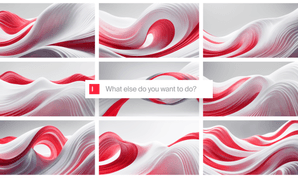
AI at Work
Typeface on Typeface: How I Uplevel Abstract AI Designs for Blogs and Webpages

Ananya Mohan · Visual Designer
June 12th, 2024 · 5 min read

AI at Work
AI-Generated Image Variations: Scaling Marketing Visuals for Global Markets

Akshita Sharma · Content Marketing Associate
April 29th, 2025 · 9 min read

AI at Work
Image Personalization: Best Practices for Personalizing Images to Target Audiences

Matthew Loewengart · Strategic Solutions Architect
May 14th, 2025 · 14 min read